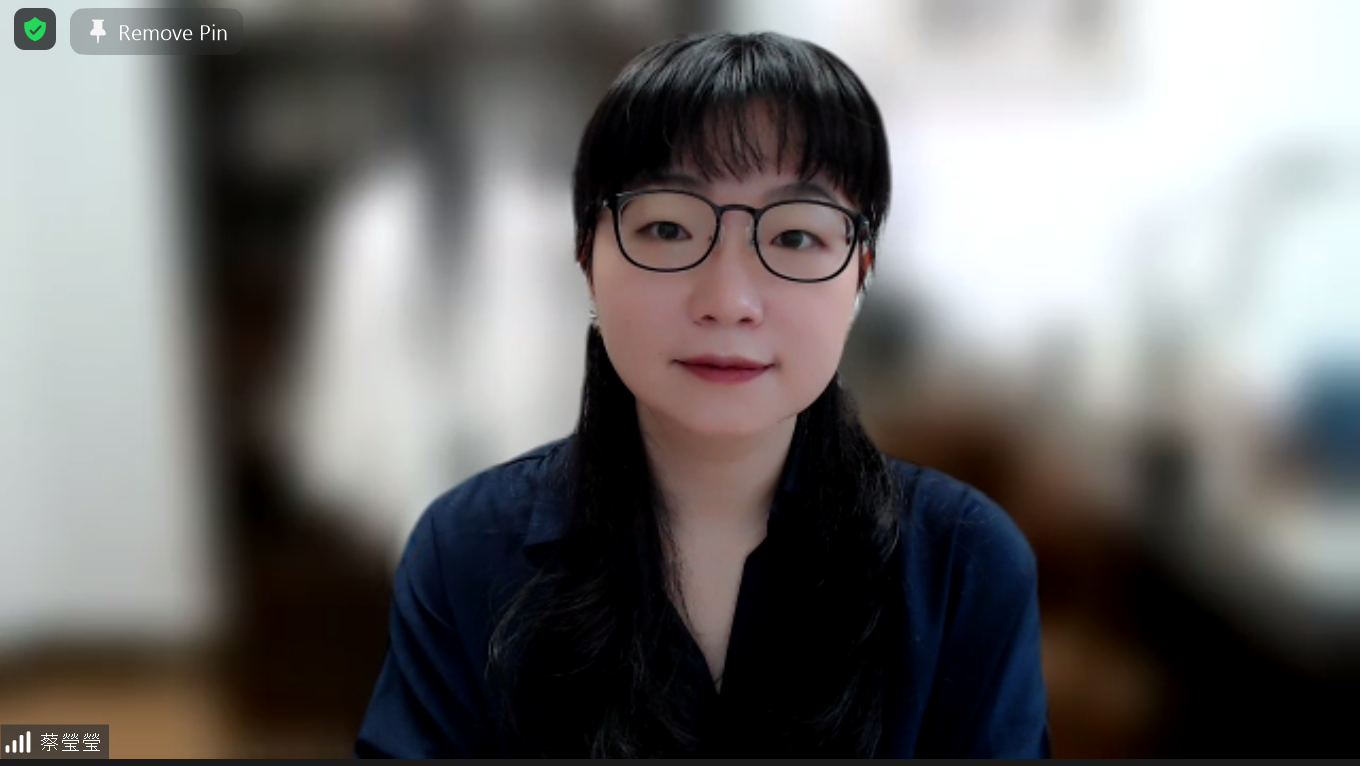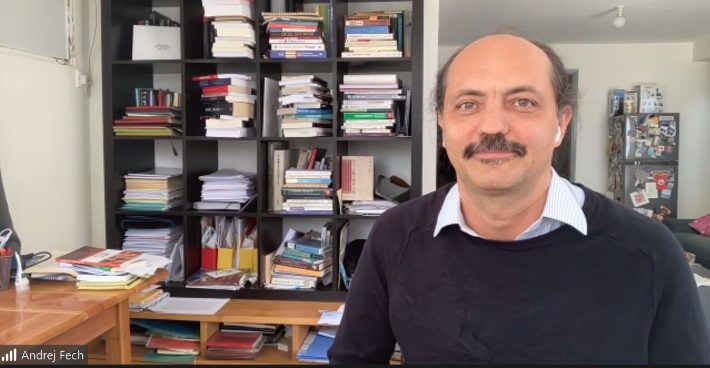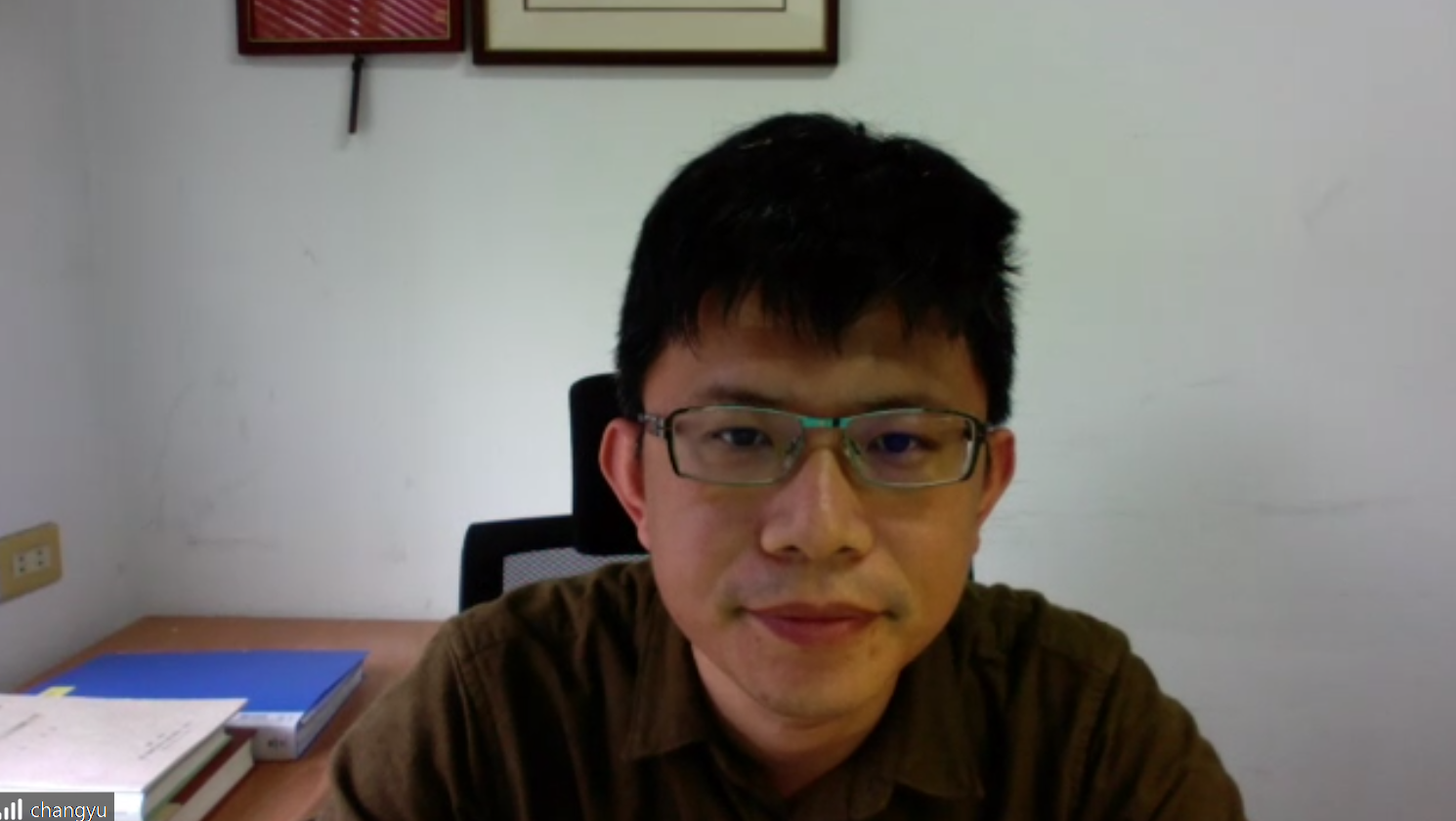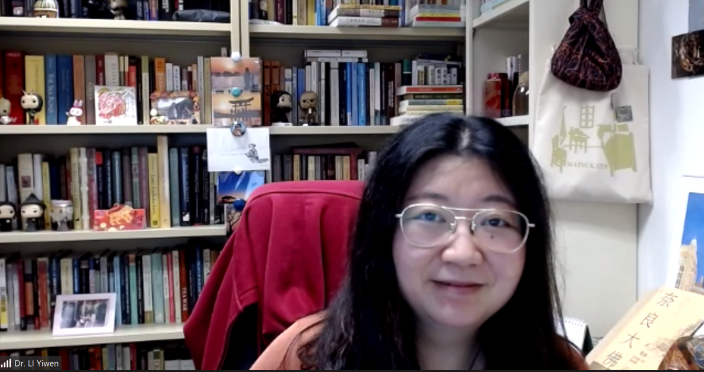Online Sinology Fortnightly 2021/22(Summary)
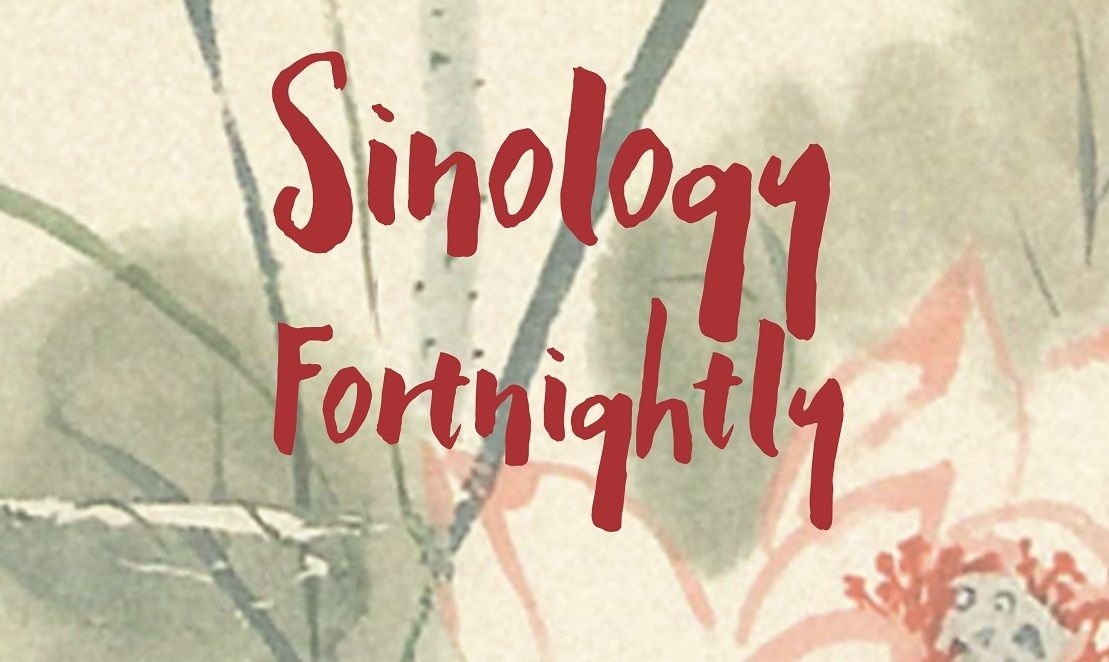
To promote academic exchanges of Classical Learning and Sinology within HKBU, the Academy will continue to organize the Sinology Fortnightly series. Every two to three weeks, a scholar, from or outside the university, that specializes in Sinology or Chinese studies, will be invited to host an interactive session with the audience and share his or her research insights and findings in a casual ambience. In view of the pandemic, the series is now conducted online. All are welcome to register for it and join us.
Below are details of the seminars of 2021/22 academic year:
First session
Date: 8 April 2022 (Friday)
Time: 3:00pm-4:30pm
Venue: Zoom
Speaker: Dr. Andrej Fech (Assistant professor, Department of Chinese Language and Literature, Hong Kong Baptist University)
Language: English
Speech title: The Zhou xun 周訓 and its Place in Early Chinese Historiography and Philosophy
Moderator: Dr. David Lebovitz (Postdoctoral Research Fellow of HKBU Jao Tsung-I Academy of Sinology)
Summary (Recorded by Guo Qianmeng):
Dr. Andrej Fech first introduced the general information and main contents of the newly excavated Western Han bamboo manuscript “Zhouxun” collected by Peking University. He estimated that the original number of bamboo slips is 231, which contains 5520 words, he inferred that the number of missing bamboo slips is about 20.
Secondly, Dr. Andrej Fech, based on the arrangement and structure of different chapters of the “Zhouxun”, suggested that the 14 chapters of the text all adopted a standardized format, i.e., On the first day of each month, Prince Gong went to the court and received education given by his father Duke Zhaowen of Zhou as to how to become a wise monarch. Subsequently, Dr. Andrej Fech cited the “Baogeng” chapter as an example, comparing it with the records of the Lüshi Chunqiu, Zhan’guo ce, Huannanzi and Shiji etc. Through analyzing their differences, Dr. Andrej Fech argued that it is impossible for Duke Zhaowen of Zhou to meet Prince Gong, and he further concluded that the text was composed in late Warring States period which took place earlier than the composition of the Lüshi Chunqiu.
Following that, Dr. Andrej Fech explained three aspects of the “Zhouxun” in detail, including the arrangement of topics, historical and chronological table, and geographical distribution. He inferred that the transfer of power took place according to the principle of hereditary monarchy in which the principle of meritocracy was concurrently taken into consideration. Furthermore, Dr. Andrej Fech cited the examples of burying the living with the dead recorded in the “Zhouxun,” Shiji and Zuozhuan in order to demonstrate that this custom had become the major obstacle hindering the development of the Qin dynasty, and from this he explained that the main philosophical theme of the “Zhouxun” is to be merciful to the people and be filial to one’s parents, he also placed emphasis on the art of power mentioned exclusively in chapter one.
Finally, Dr. Andrej Fech pointed out that we cannot take it for granted that this text is a representative of Taoism just because Liu Xiang included the “Zhouxun” in the Taoist category in the “Yiwenzhi” of Han shu.
Second session
Date: 22 April 2022 (Friday)
Time: 1:00pm-2:30pm
Venue: Zoom
Speaker: Dr. Chang Yu-Wei (Assistant professor, Department of Chinese Literature, National Taiwan University)
Language: Mandarin
Speech title: Explaining the graphs wu 寤 (*ŋˤa-s) and huang 詤 (*m̥ˤaŋ)
Moderator: Dr. Joern Peter Grundmann (Postdoctoral Research Fellow of HKBU Jao Tsung-I Academy of Sinology)
Summary (Recorded by Wang Xueting):
Dr. Zhang began the lecture by explaining that one need to pay attention to the “temporal and spatial characteristics” and “linguistic relationship” when analyzing graphical components. He then suggested that one should take heed of the “contextual meaning” and “semantic analogy” when discussing semantic changes, in order to clarify these, he used the two characters “wu” 寤 (wake) and “huang” 詤 (untruth) as case studies.
Dr. Zhang pointed out that in the oracle bone inscription, “wu” is composed of “meng” (dream), and from this we know that the meaning of “wu” is related to sleep. The Shuowen says “wu means to wake up from sleep and utter some words” 寐覺而有言, the understanding of the word “meijue” 寐覺 (wake up) is related to the state of “wu”, comparing with the meaning of “meng” in the Shuowen which gives “meng means sleeping yet remaining conscious,” and taking into account several records of the transmitted and excavated texts, Dr. Zhang sorted out the evolution of the meanings of “wu,” “meng” and “jue.” By examining the context of the text, he illustrated the transforming process of the meanings of “wu” whose meanings change from “awakening” to “realization”. Thereupon, Dr. Zhang discussed the meaning of “huang, dream utterances” 詤,夢言也 recorded in the Shuowen. Taken into consideration the interpretation of Wang Li, who said that “to explain it as ‘dream utterance’ is unreliable, it should be trance utterance or absurd speech, whose extended meaning is ‘lie’ or ‘untruth,’ classical texts usually use the character ‘huang’ to record this extended meaning.” Dr. Zhang elucidated the transformation of “dream utterances” to “absurd words.”
Finally, Dr. Zhang concluded that the original meaning of “wu” is “speaking in a dream,” as to the “meijue er youyan” 寐覺而有言 recorded in the Shuowen, the character “jue” means “sentient” instead of “awake.” The meaning of “wu” has changed from the meaning of “words uttered while being sentient in a dream” to the “words uttered after awakening from a dream,” and “wu” began to collocate with “meng.” Meanwhile, there are temporal and spatial differences between the collocations of “meng~, wu” and “meng~, jue.” Moreover, the early concept of “jue” came from “gao” (an expression to make you feel awake), and it was not related to sleep. In addition, the Shuowen’s explanation of “huang denotes dream utterances” 詤,夢言也 is reliable. The meaning of “huang” changed from the specific connotation of “dream utterance” to “untruth”, reasoning by analogy, “yi” 囈 and “yi” 寱 can serve as evidences of parallel semantic structures.
Third session
Date: 6 May 2022 (Friday)
Time: 15:00pm-16:30pm
Venue: Zoom
Speaker: Dr. Li Yiwen (Assistant Professor, Department of Chinese and History, City University of Hong Kong)
Language: Mandarin
Speech title: Exchanges between Tang Merchants and Japanese Monks in the mid-to-late Ninth Century: A Study on Fūsō Sengen Shū and “Letters from the Tang People”
Moderator: Dr. David Lebovitz (Postdoctoral Research Fellow of HKBU Jao Tsung-I Academy of Sinology)
Summary (Recorded by Lan Qian):
Dr. Li pointed out that the several decades in the mid-to-late ninth century were the key period for Sino-Japanese exchanges: it had established the development model for several centuries afterwards. Through interactional activities such as crossing the sea and making entrusted purchases, monks and merchants had become the important groups of people who frequently travelled between Japan and China.
Subsequently, based on the records of Fūsō Sengen Shū (Fengzao jianyan ji 風藻餞言集), she introduced in detail the poems and letters written by Zhan Jingquan 詹景全, Li Da 李達 and other Tang merchants to the Japanese monk Enchin 圓珍, also, by relying on the letters written by Tang people, such as those written by Xu Gongzhi 徐公直, Xu Gongyou 徐公祐 and other Tang merchants to the Tang dynasty monk Yikong 義空 who travelled to Japan, Dr. Li opined that in the middle and late ninth century, after the suspension of the Japanese envoys to the Tang imperial court, the maritime merchants who travelled frequently between China and Japan had become an indispensable and very effective medium to maintain and even promote Sino-Japanese interactions.
Dr. Li further pointed out that although monks turn to maritime merchants more often ostensibly, in fact, the Buddhist network in which the monks had formed is very attractive to the merchants. On the one hand, they respect the monks and try their best to participate in and support the Buddhist activities; on the other hand, the cooperation with the monks makes the Buddhist network not only a channel for spreading the Buddhist teaching, but also a network containing important interpersonal resources. Maritime merchants tried to use this interpersonal resource to obtain greater profit. In general, the Buddhist network and the trade network began to show a tendency to overlap and even to merge, and this trend continued and was intensified in the following centuries.
Fourth session
Date: 20 May 2022 (Friday)
Time: 1:00pm-2:30pm
Venue: Zoom
Speaker: Dr. Tsai Ying-ying (Assistant Professor, Department of Chinese language and literature, University of Taipei)
Language: Mandarin
Speech title: Ancient text and manuscript versions: Recent discussions on the compilation of the Zuozhuan
Moderator: Dr. Joern Peter Grundmann (Postdoctoral Research Fellow of HKBU Jao Tsung-I Academy of Sinology)
Summary (Recorded by Lau Tsam Lok):
Dr. Tsai first took Hong Liangji 洪亮吉, Mao Qiling 毛奇齡, Duan Yucai 段玉裁 etc. as examples to point out that scholars of the Qing Dynasty carried out research into the Zuozhuan by seeking its ancient version, that is, trying to restore the original edition of the Zuozhuan with respect to its compilation format and textual exegesis. “The Annals are divided into 4 scrolls, while the Zuo commentary is documented in sixteen scrolls, and the exegeses are dominated by Jia Kui 賈逵, Xu Shen 許慎, Zheng Xuan 鄭玄, and Fu Qian 服虔.”
Secondly, Dr. Tsai adopted the narrative point of view, by citing the opinions held by Yu Yue 俞樾and Weng Fanggang 翁方綱, she pointed out that Du Yu’s Zuozhuan zhu contains the problem of “mistakenly divided the Annals”. There are 35 such cases of errors regarding the division of years. From this, it can be observed that Yu Yue, Weng Fanggang deliberately established the layout of the ancient version of the Zuozhuan from the perspective of the coherence of the “narrative”, which is an attempt to restore the ancient appearance of the Zuozhuan. This approach, if driven to the extreme, it will lead to the division of the Zuozhuan just as what Liu Fenglu 劉逢祿 had done; at first it seems to be conducive to the six arts, it is, however, actually destructive.
Afterwards, Dr. Tsai compared the perspective of Qing scholars with that of their concurrent Western counterparts regarding how to study the Zuozhuan. Qing scholars paid more attention to restoring the Zuozhuan’s original appearance, i.e., the ancient version of the Zuozhuan, while Western sinologists placed emphasis on the process of how the ancient version of the Zuozhuan transforms into the current popular version.
Finally, Dr. Tsai took the Tang manuscript of the Zuozhuan published by Kanazawa Bunko Museum as an example and pointed out that its record of the commentary on Duke Xiang of Lu in the 25th year may be the subsection of the Zuozhuan that Du Yu saw at that time. Subsequently, she compared the ninth and tenth chapters of the Tsinghua bamboo manuscript “Xi’nian” with the narratives of the sixth and seventh years of Duke Wen of Lu in the Zuozhuan, in which both recorded the war between Qin state and Jin state, Dr. Tsai suggested that it is obvious that in terms of narrative strategy, the Zuozhuan emphasizes the sudden betrayal of the Jin state against the Qin state which triggered the war, while the sequence of events recorded in “Xi’nian” is different from that in the Zuozhuan, which shows different perspectives of the narratives between them. Moreover, Dr. Tsai drew a comparison between the “Yuegong qi shi” and Zuo zhuan by citing the narratives of the war between the Wu state and the Yue state and she observed that “Yuegong qi shi” has a clear sense of chapter division. She also added that whether the writing is divided into different chapters is related to the length of the discourse and the diversity of the theme. Through making the comparison between the excavated texts and the transmitted Zuozhuan, it can guide us to ponder on the use of narrative strategies in historical records as well as the awareness of chapter division.
